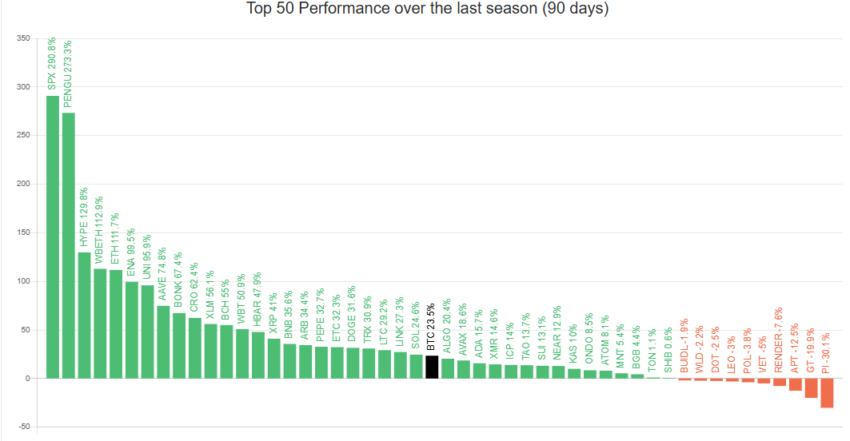
The post Altcoin Season To Hit in Q3? Korean Crypto Survey Points To Rally appeared first on Coinpedia Fintech News
As the crypto market begins to recover from recent uncertainty and volatility over macro factors, a shift in market sentiment is emerging, with investors growing more optimistic.
A recent survey of 2,000 Korean crypto investors conducted by CoinNess and Cratos reveals that there has been a shift in market sentiment from Bitcoin to altcoins. While 33% of the respondents predict Bitcoin price surge this week, 35.7% predict the market to stay steady. Only over 31% of the investors expect a dip in prices.
Investors Eye Potential Rebound for Altcoins
Coming to altcoins, although the altcoin prices are struggling, investors expect a possible rebound to be right around the corner. over 36% believe that the next altseason could begin in Q3. While 22% expect it to come later this year in Q4, 16.7% of them predict that the season could start as soon as this quarter.
However, 13.3% of the group does not expect a bull run this year at all while 11.3% of them believes that the altcoin season is already over. Despite the improved outlook on the prices, the overall market sentiment still seems to be nervous. 46% of the investors feel fear or extreme fear. While 29.3% of them were neutral, only about 24.7% were optimistic or extremely optimistic.
Lets Gauge The Altcoin Season Index
According to data from CoinMarketCap, the CMC Altcoin Season Index is currently at just 16 which is well below the threshold for altseason to begin. This might suggest that Bitcoin is still dominating the market, especially after its strong rebound following the Trump Tariffs scare that briefly dragged it down to the $75K range.
Since the launch of Bitcoin ETFs in January 2024, Bitcoin has maintained dominance with over 60% of the market share, while altcoins remain below 40%. As prices continue to recover, it remains to be seen whether altcoins can outperform Bitcoin in the coming months.
- Also Read :
- Key Economic Events In This Week : Impact On Crypto
- ,
Analyst Shares Bullish Outlook
Crypto analyst Altcoin Gordon has shared a bullish outlook for the crypto market. He said that various indicators are hinting towards a huge bull market with the onset of altcoin season.
Bitcoin has finally broken above $87,000, now trading at $88,054, up around 3% over the past week, while altcoins are still struggling to gain momentum. Major tokens like Ethereum ($1,575), XRP ($2.08), and Solana ($138.91) have all slipped slightly in the past 24 hours, down 0.5%, 0.3%, and 0.2%, respectively.
Never Miss a Beat in the Crypto World!
Stay ahead with breaking news, expert analysis, and real-time updates on the latest trends in Bitcoin, altcoins, DeFi, NFTs, and more.








